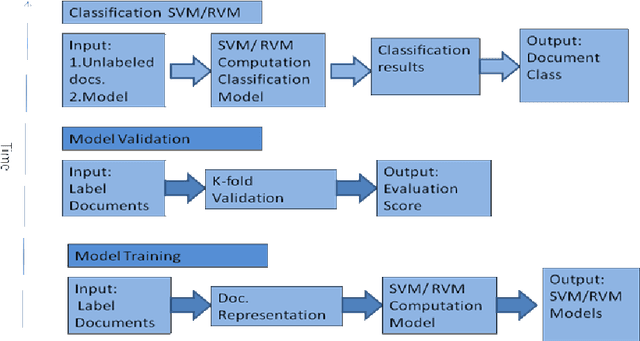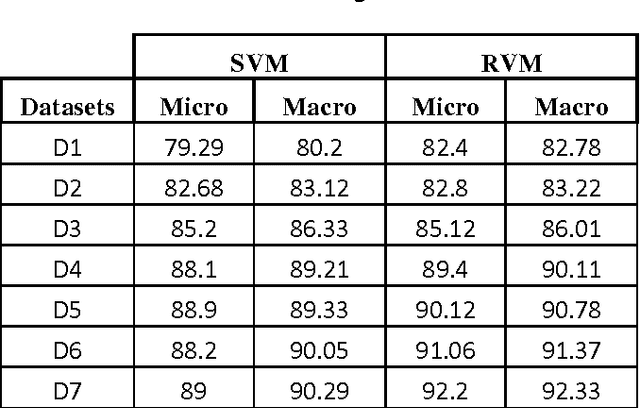A comparison of SVM and RVM for Document Classification
Paper and Code
Jan 13, 2013



Document classification is a task of assigning a new unclassified document to one of the predefined set of classes. The content based document classification uses the content of the document with some weighting criteria to assign it to one of the predefined classes. It is a major task in library science, electronic document management systems and information sciences. This paper investigates document classification by using two different classification techniques (1) Support Vector Machine (SVM) and (2) Relevance Vector Machine (RVM). SVM is a supervised machine learning technique that can be used for classification task. In its basic form, SVM represents the instances of the data into space and tries to separate the distinct classes by a maximum possible wide gap (hyper plane) that separates the classes. On the other hand RVM uses probabilistic measure to define this separation space. RVM uses Bayesian inference to obtain succinct solution, thus RVM uses significantly fewer basis functions. Experimental studies on three standard text classification datasets reveal that although RVM takes more training time, its classification is much better as compared to SVM.
 Add to Chrome
Add to Chrome Add to Firefox
Add to Firefox Add to Edge
Add to Edge